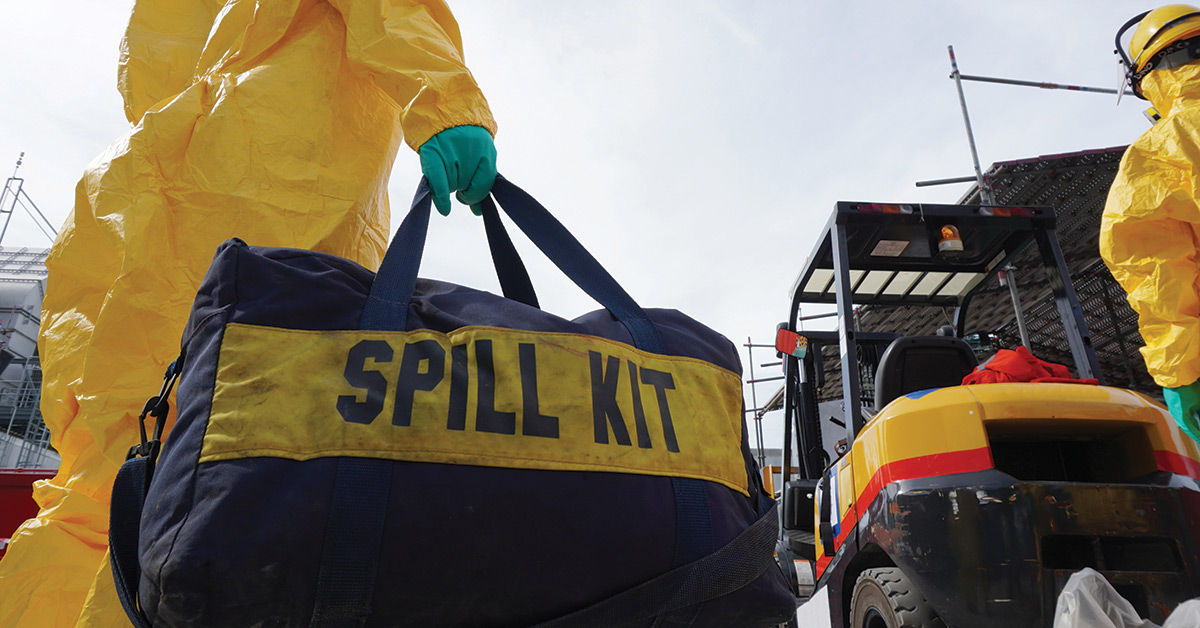SPCC refresher and spill tracking
Date Posted: 04/17/2023

If a facility or vessel discharges a harmful quantity of oil to navigable waters or adjoining shorelines, the owner/operator must follow certain federal reporting requirements. These requirements are found in two EPA regulations – 40 CFR 110, Discharge of Oil, and 40 CFR 112, Oil Pollution Prevention. The second is commonly referred to as the Spill Prevention, Control and Countermeasure rule or SPCC rule.
A harmful quantity is any amount that violates state water quality standards, causes a film or sheen on the water’s surface, or leaves sludge or emulsion under the surface. You must report discharges immediately to the National Response Center (NRC). But the reporting may not stop there.
A discharge must be reported to the Environmental Protection Agency (EPA) Regional Administrator as well when there is a discharge of:
- Over 1,000 gallons of oil in a single discharge to navigable waters or adjoining shoreline
- Over 42 gallons of oil in each of two discharges to navigable waters or adjoining shorelines happening within any twelve-month period
Certain facilities must develop SPCC plans that explain equipment, workforce, procedures, and training to prevent, control, and supply proper countermeasures to an oil discharge. Applicable facilities include those that:
- Store over 1,320 gallons of oil, and
- Have a “reasonable expectation of an oil discharge” to water.
Cleanups In My Community Map
EPA has an interactive map feature on their website called Cleanups In My Community Map that lets citizens see where oil spills have occurred, pictures of the incidents, and a description of the cleanup efforts. This means that if your company has a reported oil spill, customers of yours could potentially look it up on this map. Users can search specific locations in their state. They can also select from a multitude of Cleanup Filters such as “Active” or “Complete” for the response status.
The following are examples of some oil spills viewable on this map:
- New Mexico — In July 2010 EPA was notified by the NRC that a multi-railcar train derailment took place. About 35,000 gallons of vacuum gas oil was discharged into an unnamed creek about a mile from the Rio Grande.
- North Carolina — In March 2017 a possible 5,000-gallon fuel spill was reported at an abandoned industrial plant. The valve of an aboveground storage tank was knocked off during a vandalism incident.
- North Dakota — In March 2014 ice dams caused flooding of nearby farm and oil fields. An oil storage tank toppled and released about 33 barrels of oil flowing toward the Missouri River.
- Oregon — In July 2009 a manhole on a tank used for processing used oil for recycling ruptured. An estimated 700 to 1,000 gallons of oil was released.
- Washington — In May 2015 a tank truck and pup trailer rolled over on WA State Highway 21 within the Colville Confederated Tribes Reservation. A reported 2,800 gallons of gasoline and 60 gallons of diesel fuel were spilled into the uphill ditch of the highway, near the Sanpoil River.
How Safety Management Suite Can Help
Staying in compliance with federal environmental regulations is challenging, especially when new variables are being introduced. Watch our archived webcast from April 27, 2023 on Spill Prevention, Response, and Notification. This webcast explores what your company can do to prevent and deal with spills to limit damages and quickly get back up and running. It also touches on the major OSHA, EPA, CSB, and DOT regulations that relate to spill prevention, response, and notification. Log in or start your free trial to view the archived webcast today!
E-mail Newsletter
Sign up to receive the weekly EHS Insider email newsletter for safety articles, news headlines, regulatory alerts, industry events, webcasts, and more.